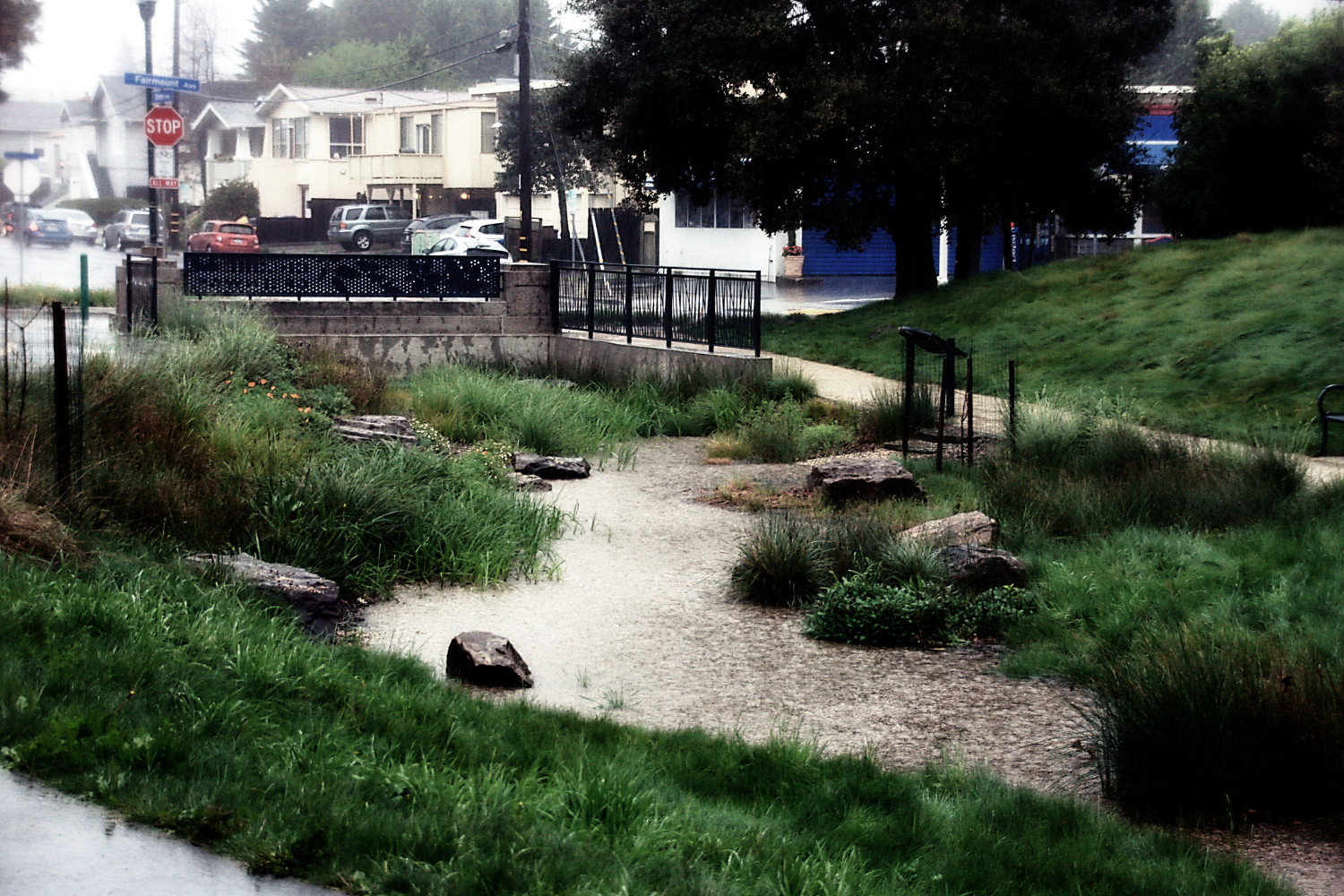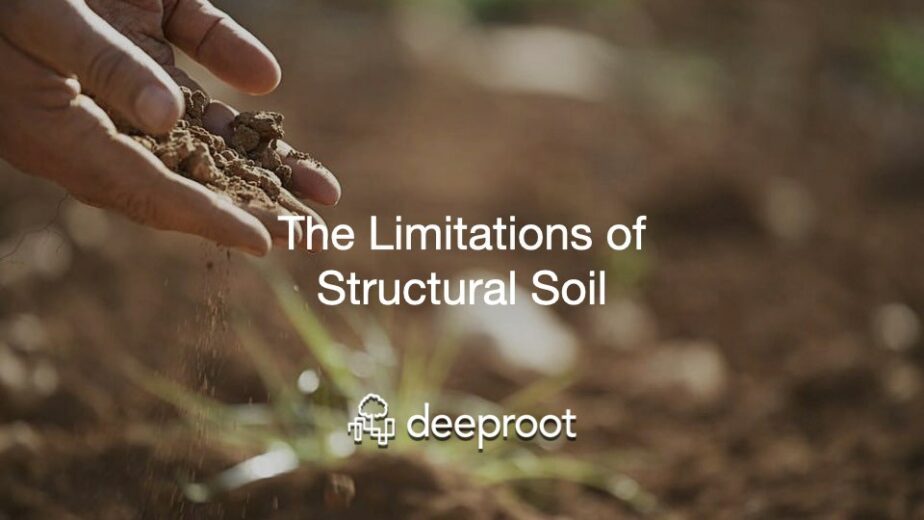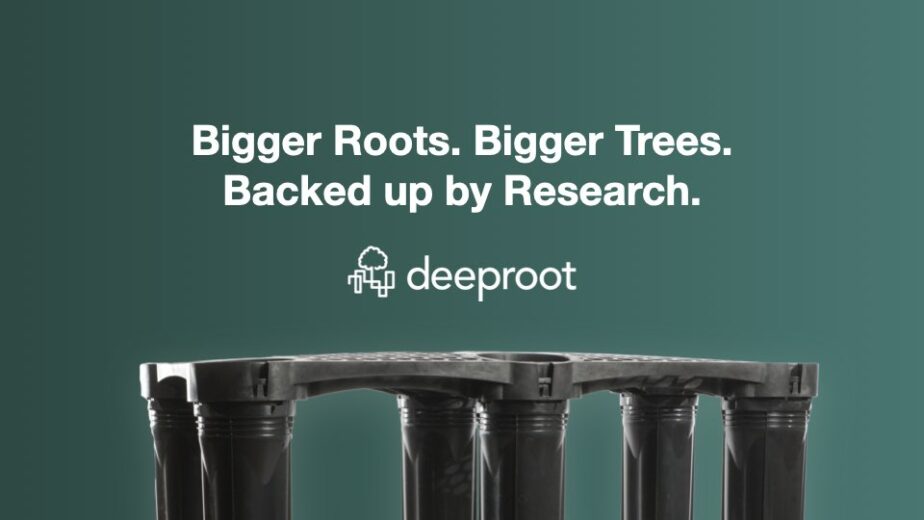This post was originally published on the Soils Matter blog.
One of soil’s many important functions is to act like a sponge. As nature’s blanket, soil soaks up water that falls as rain or melts from snow and ice. Soil not only stores water, it also helps to filter out pollutants such as nutrients, bacteria, and sediments that may collect as water moves over the surface of the earth. Eventually, water moving through soil will collect as groundwater or will resurface as springs, puddles, or seeps.
Urban environments face great challenges regarding storm water management, as much of the original soil in cities is covered by concrete and other impervious surfaces. This means that urban soil cannot adequately do its job of capturing, cleaning, and storing rainwater. Instead, water has no place to go but into streets, through storm drains, and into water reclamation plants or surface waters. More information on water-related challenges in urban environments (such as water pollution and flooding) can be found here.
Exciting solutions are being discovered to address issues of flooding and surface water pollution. Many cities are now building retention ponds while also developing “green infrastructure”. This means that people are designing landscapes and buildings that allow soils and plants to fulfill their duties as natural retainers and purifiers of storm water.
These green technologies can be applied by anyone, not just city planners and landscape architects! If you live in a home with a yard, or contribute to a community garden, you too can help control the fate of rainwater.
One way is to plant a rain garden, which is a designated area in your yard or garden that collects and slows down runoff. Plants within the rain garden will take up water as well as slow down its movement so that it has more time to infiltrate the soil. To build a raingarden in your yard, read here.
Simple soil management within your yard can also make a big difference, especially if you focus on preventing and reducing soil compaction. Like a sponge, soil contains many pores. Compaction is the act of squeezing the soil together, which reduces the size and distribution of pores. Soil that has been compacted, much like a wrung out sponge, is not able to hold as much water as a healthy soil. It is much more difficult for water to even enter compacted soils, as the surface contains fewer channels for water to flow into. To learn more about compaction’s effects on the soil, read here. The same principles apply to your yard.
Some simple steps to reducing soil compaction in your yard include:
- Limiting the amount of walking you do in your yard, especially after rains. Soil is most vulnerable to compaction when it is wet! Create designated pathways or play/rest areas and stick to them. Mulching these areas will add some extra protection for your soil. Also, do your best not to drive or park vehicles and other heavy equipment in your yard.
- Managing your soil for organic matter. The best way to do this is to leave plant matter, such as grass clippings and leaves, on your yard. They will eventually decompose and become incorporated into the soil. Organic matter will increase your soil’s water holding capacity, which is the overall amount of water that the soil can hold.
- Making sure your soil is always covered, either by deeply rooted plants or mulch. Over time, plant root growth promotes soil aggregation. This gives the soil a loose crumbly appearance, and is a great sign that water can easily flow down instead of over the surface of your yard. Mulch, on the other hand, will help in troubled areas where plants do not easily grow.
These actions may not seem like a lot, but together they could make a great impact on the quality of water moving through your yard, as well as the health of your soil. They help the soil capture and clean the water in your city, and help the environment…just as soil was meant to do!
By Mary Tiedeman, soil scientist






I like what this article mentions about one of soils’ primary functions being to act like a sponge. It makes sense that this could be good to make sure the water doesn’t pool on top causing puddles, etc. I’ll have to look into some drainage designs for my backyard to ensure the soil soaks up some of the water and effectively distributes the rest of it.